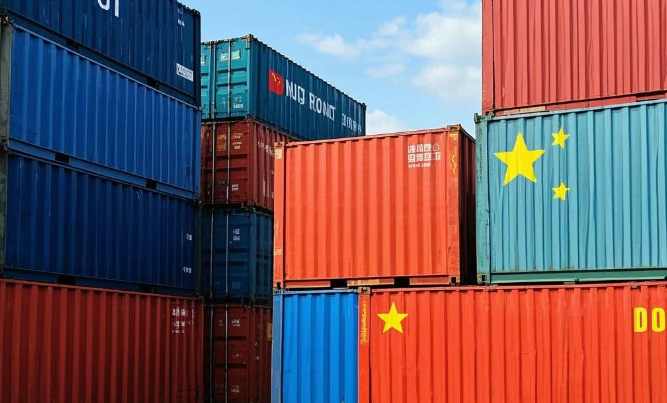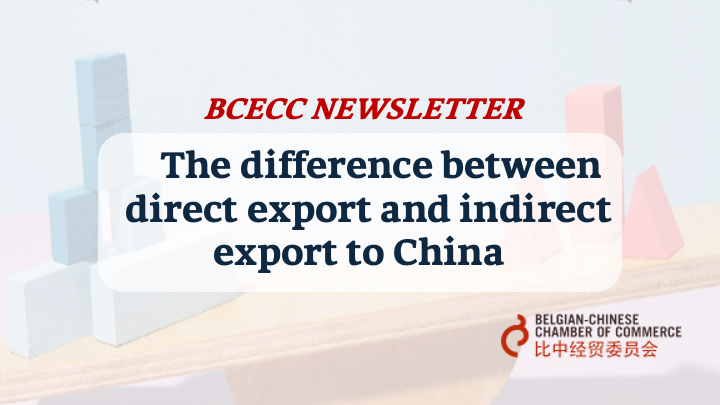Expanding into the Chinese market offers immense growth opportunities. However, it also comes with various regulatory and logistical challenges. For Belgian companies looking to enter this market without establishing a physical presence in China, there are mainly two ways to enter the Chinese market: direct export and indirect export. In this article we will elaborate on both options.
The direct export model
Direct export to China can be applied in both B2C (business-to-consumer) and B2B (business-to-business) models. In the B2C model, companies can sell directly to individual customers, allowing for greater control and better understanding of consumer needs. A common example of B2C direct export is cross-border e-commerce, where international companies sell their products directly to Chinese consumers through online platforms, bypassing traditional import channels. This method is particularly attractive for companies seeking to reach a broad consumer base, without establishing a physical presence in China.
In the B2B direct export model on the other hand, companies sell their products directly to customers in China, without involvement of third parties. This entry model is commonly used for larger transactions, such as equipment sales, and usually focuses on industrial or wholesale customers.
This direct export model has several advantages. It allows the foreign exporter to generate bigger profit margins, gain better control over their operations in China, build a closer relationship with their customers, and gain a better understanding of the Chinese market. With direct market access -, they also receive faster feedback about their products, which enables them to adapt more swiftly to market needs. Additionally, direct export offers better protection of intellectual properties, such as trademarks, patents, and copyrights. There is also flexibility in adjusting or improving your marketing efforts as needed.
However, direct export also comes with significant disadvantages. As the exporter, you are accountable for all transactions and logistics, including handling imports, licenses, certifications, customs clearance, and packaging. Moreover, the payment mentality among Chinese customers can be challenging, requiring commitment and careful attention. After-sales service and communication can also prove more difficult due to the distance and cultural or linguistic barriers.

The indirect export model
In contrast, indirect export involves selling through intermediaries such as agents or distributors. In the Indirect export model, both B2C (business-to-consumer) and B2B (business-to-business) approaches are also viable.
For B2C, companies can work with local agents or distributors who sell their products directly to consumers through retail channels or online platforms, allowing the exporter to enter the Chinese consumer market without directly managing sales. For example, a distributor might purchase products in bulk and resell them through stores or e-commerce platforms in China. In the B2B context, exporters can partner with agents or distributors who sell to other businesses or industries, such as providing machinery, raw materials, or wholesale products to Chinese companies. This approach helps transfer some of the risks to the local intermediaries, while leveraging their knowledge of the market, distribution networks, and customer base.
Pros & cons of working with agents
When working with an agent, as the Belgian exporter you typically sell directly to the customer on your own behalf. In this case, the agent is compensated through commissions. One of the key advantages of using agents is that you retain sufficient control over your business and maintain direct relationships with your customers. Agents should also keep you updated on market developments and competition, allowing you to stay informed. Additionally, the commission paid to agents is typically lower than the profit margin required by distributors.
However, working with agents requires regular evaluation and close communication. There is also a risk that the agent could switch to a competitor if your partnership ends. In some cases, tax implications may arise, and you might need to keep stock in China. Caution is also needed when dealing with agents who approach you unsolicitedly.
Pros & cons of working with distributors
Another option for indirect export is working with distributors. Distributors purchase goods from the Belgian exporter and resell them at a profit. This model allows you to transfer some of the risk to the distributor. Since distributors often earn a higher profit margin than agents, they tend to focus more on promoting your products. A significant advantage of this method is that it doesn’t require you to establish a legal entity in China, and your main responsibility is to manage and monitor the distributor rather than dealing with each individual customer in China.
However, working with distributors also has its drawbacks. You may have limited control over their activities, and there is no guarantee they will prioritize your product over others. Furthermore, if you choose to work with an exclusive distributor, your success on the Chinese market will be entirely dependent on that distributor’s performance. If something goes wrong, it could jeopardize your entire business in China.

Conclusion
In conclusion, choosing the right entry mode for China requires careful assessment of your business goals, investment capabilities, desired level of control, and risk tolerance. Whether you decide on direct export or indirect export through agents or distributors, understanding the advantages and disadvantages of each method will help you determine an effective strategy for entering the Chinese market.
Although it’s a good idea to initially enter the Chinese market through direct or indirect export, at some point of time all successful Belgian companies in China ultimately established their own legal entity in China. Some of them continued to work with their Chinese partners, but having a local presence provides greater control over operations, enabling more effective management of distribution channels, marketing strategies, and customer relationships. It also allows you to manage complex local regulations more efficiently, access incentives provided by the Chinese government, and build stronger brand credibility with both consumers and partners.
And finally, it is not only extremely important for each Belgian company to be well prepared and select the right entry mode for China, but also to find a way to follow up and master the project once it started. Any mistakes made during this challenging starting period can have a crucial impact on the project’s feasibility on the mid to long-term.
Please contact the Belgian-Chinese Chamber of Commerce (BCECC) in case you have any questions.

